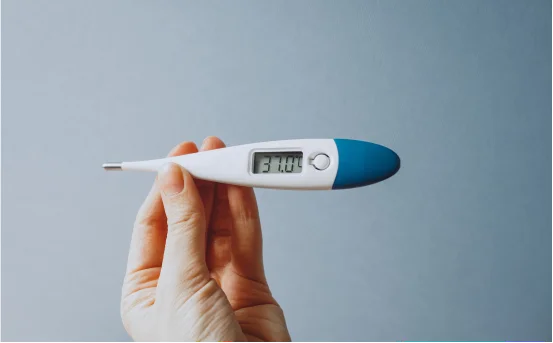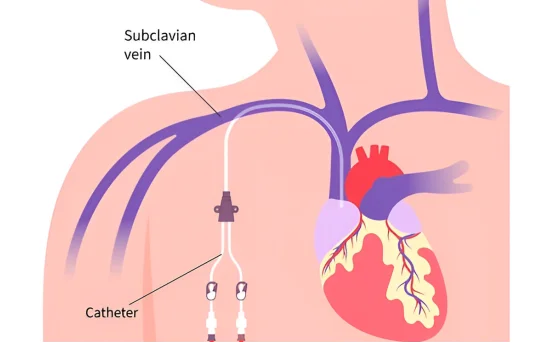The hysteroscopic procedure is used to diagnose and treat a variety of intrauterine disorders. The hysteroscope is inserted through the vaginal and cervical openings into the uterus to provide direct visualization of the cavity. This technique has revolutionized gynecological diagnosis and treatment, offering a quicker recovery time, reduced complications and no external incisions.
What is Hysteroscopic surgery?
Understanding of types of hysteroscopic surgery
The hysteroscopic procedure is used for both diagnosing and treating conditions that affect the uterus. It is usually performed in two ways:
- Diagnostic Hysteroscopy : Examines the uterine cavity to detect abnormalities.
- Operative hysteroscopy : Used to correct and treat problems that are identified during diagnostic hysteroscopy.
Both procedures are often performed as outpatients and don’t usually require general anesthesia.
Hysteroscopic surgery Types
Take a look at some of the common types of hysteroscopic surgeries.
1. Diagnostic Hysteroscopy:- Diagnose abnormal uterine bleeding or abnormalities, infertility and repeated miscarriages.
Procedure:
The endometrial lining is examined using a thin hysteroscope inserted in the uterus. This type of surgery does not use surgical instruments to remove or cut tissues.
Benefits:
- Non-invasive
- Quick Results
- Minimal discomfort
2. Operative Hysteroscopy
It is used when a treatment is required during or following a diagnostic evaluation. The hysteroscope is used to pass specialized instruments through it in order to treat uterine problems. The following are some examples of operative hysteroscopic surgery:
Hysteroscopic Polypectomy
Purpose :
Remove polyps from the endometrial liner.
Ideal For:
- Women with abnormal bleeding
- Polyps can cause infertility
Recovery:
- Minimal downtime
- A few days of light bleeding or cramping
Hysteroscopic Myomectomy:- The purpose of is to remove submucosal fiberoids.
Procedure:
- The hysteroscope is used to insert small surgical instruments into the uterus in order to remove fibroid tissue.
- Multiple sessions may be required depending on the size and number fibroids.
Benefits:
- Preserves uterus
- Fertility outcomes can be improved
Endometrial Ablation:- To cure heavy menstrual bleeding, by destroying endometrial lining.
Techniques Used:
- Electric current (resectoscopic Ablation)
- Hot fluid (thermal balloon)
- Radiofrequency or microwave energy
not recommended for
- Women planning future pregnancies
Advantages:
- Menstrual flow is reduced or stopped
- It is less invasive than hysterectomy
Adhesiolysis Hysteroscopic
The purpose is:
To eliminate intrauterine adhesions (also known as Asherman syndrome).
Adhesions:
- Prior surgeries (D&C)
- Infections and trauma
Procedure:
- The adhesion is gently removed with scissors or an energy device.
Post-Surgery Care:
- To prevent recurrence, hormone therapy or IUDs may be prescribed.
Resection of the Septum
The purpose is to correct a uterine septum. This congenital abnormality can cause infertility and miscarriages.
Procedure:
- The uterus’ thin tissue is divided using hysteroscopic scissors or electrosurgery.
Fertility Effect
- The pregnancy outcome is improved significantly
When is Hysteroscopic surgery Recommended?
Patients with:
- Abnormal uterine bleeding
- Recurrent miscarriages
- Infertility
- Uterine polyps or fibroids
- Uterine septum
- Intrauterine adhesions
Preparation for Hysteroscopic surgery
Pre-operative Steps:
- You may need to fast
- Test for pregnancy to eliminate it
- Do not engage in sexual activity for 24 hours before surgery
- Tell your doctor about any current medications
Timing:
Often scheduled just after menstruation for optimal visibility.
Risks & Complications
Although generally safe, there are some risks that may arise.
- Uterine perforation
- Infection
- Bleeding
- Reaction to anesthesia
- Scar tissue formation
Follow all post-operative instructions to avoid complications.
Recovery and Aftercare
- Duration Most patients return to normal activity in 1-2 days.
- Symptoms
- Follow up is required to evaluate healing and treatment results
The condition being treated may require additional hormone treatment, imaging or follow-ups.
Hysteroscopic surgery: Benefits
- No external incisions
- Outpatient procedure
- Faster recovery
- Postoperative pain is reduced
- Uterus preservation (especially important for fertility).
Conclusion
Hysteroscopic Surgery is a cornerstone in modern gynecology because of its safety and effectiveness. The hysteroscopic surgery available today can be used to treat uterine malformations or fibroids as well as diagnose abnormalities.
Consult your gynecologist if you are experiencing symptoms such as abnormal bleeding or difficulty conceiving. You may also have been diagnosed with atypes of hysteroscopic surgeryn uterine malformation.






















